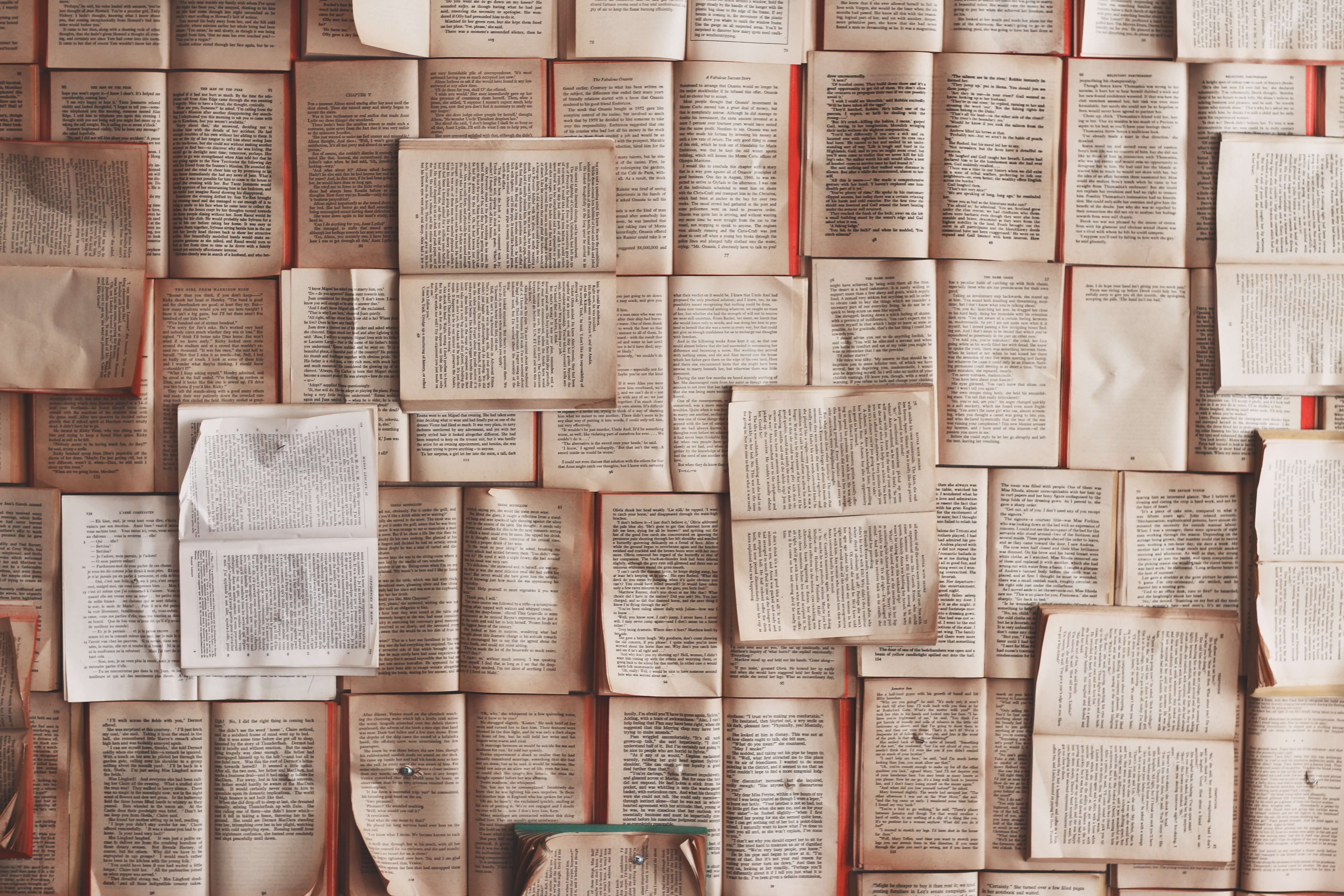- The Meaning of Critical Thinking: A Key Skill for Navigating Today’s Information Landscape - November 3, 2025
- Grandparents Can Develop Activist Grandchildren - September 29, 2025
- Top Six Reasons Credit Union Benefits Are a Smart Choice Over Banks - August 18, 2025
Last Updated on September 30, 2025
Why are Sensitivity Readers So Controversial?
I’ve been fascinated by a controversy in the publishing industry — sensitivity readers. Are they liberals intent on censoring authors? Or are they people of marginalized identity who help authors create authentic characters?
The underrepresentation of marginalized voices in publishing appears to have fueled the furor. Social media allows people to easily call out inauthentic characters. And publishers respond by delaying the publication of books or removing them from the shelves. A resource that can prevent these issues is a sensitivity reader.
What is a Sensitivity Reader?
 Sensitivity readers review manuscripts for authenticity to ensure that authors accurately portray characters with marginalized identities. Their feedback helps authors write more nuanced characters and avoid bias and stereotypes. In addition to sensitivity reader, other terms are diversity reader, cultural reader, and authenticity reader.
Sensitivity readers review manuscripts for authenticity to ensure that authors accurately portray characters with marginalized identities. Their feedback helps authors write more nuanced characters and avoid bias and stereotypes. In addition to sensitivity reader, other terms are diversity reader, cultural reader, and authenticity reader.
Author sensitivity is essential if the character is outside the writer’s identity. For example, a white author writing about a black person. However, some authors use sensitivity readers even when writing a character similar to themselves.
Sensitivity readers are hardly new, and publishers have long relied on experts, like historians, psychologists, lawyers, and police officers, to make sure a fictional narrative rings true. More than 30 years ago, Scholastic hired child psychologists to evaluate the plotlines and dialogue in its best-selling series “The Baby-Sitters Club,” because the novels dealt with touchy topics like eating disorders and divorce. – Alexandra Alter
Writing authentic characters is essential in child and young adult literature because the audience is impressionable. It is essential to get it right. Additionally, young adult readers appear to be the most vocal critics, perhaps because they are more adept at using social media.
Advantages of Using Sensitivity Readers
I’ll give credit to most authors for wanting to create great characters and storylines. Therefore, having a sensitivity reader check for bias and stereotypes seems like a quality control goal, similar to ensuring accurate historical facts or authentic characters. As editor Trish Lockard writes, sensitivity readers have come of age.
For those of us who hold privilege, though, we are often unaware of what might be insensitive to others, or worse, harmful.
Trauma is a nigh-inescapable part of the human experience, and one of the best ways to deal with it is through art and literature. In dealing with it, however, steps can be taken to not pass it on. Likewise, art’s great strength is its ability to reflect the glorious multiplicity of being and experience, and to expand the imagination beyond the limiting force of stereotype. – Frank
In a typical review, the sensitivity reader would highlight potential words or scenes that could be improved, along with ideas for how to do so. The reader might also provide resources for making the corrections, such as books, articles, and websites.
Here, an author who used a sensitivity reader describes the outcome.
Without red-lining specific words, they suggested new terms and topics I could research to make the details of my characters’ lives more authentic. Perhaps best of all, they opened up my eyes to my own ingrained bias in how I perceive and describe people of all races. While some may consider their role “fraught and subjective,” I think we can all agree that multidimensional characters, fresh perspectives, and detailed, believable world-building all make for better books. They certainly did with mine—and with many others.
Why are Sensitivity Readers Controversial?
Those opposed to sensitivity readers, and they are a vocal group, seem to be focused on three areas: censorship, the nature of writing as art, and market controls.
Censorship

It is true that publishers have pulled books in response to community outcry. For example, the children’s book A Birthday Cake for George Washington was removed because of its portrayal of ‘happy slaves.’ However, the decision to remove a book is not the call of a sensitivity reader.
Sensitivity readers are the opposite of censorship. Censorship would be saying: ‘You can’t write this character, you can’t say this thing this way.’ That’s not what they do. They don’t say: ‘You can’t say this.’ They are much more likely to say: ‘Have you thought of it this way? Have you researched this? Are you aware that saying something this way is a trope or cliche?’ – Alison Flood
Writing as Art
Another area of controversy is that writers are artists, and some believe people should not critique an author’s art.’ However, in reality, books are often critiqued multiple times before publication. Writers routinely use editors at several stages of a project.
Editors
Here are examples of how an editor reviews a manuscript at various stages, from Trish Lockard at Strike the Write Tone:
A developmental edit occurs early in the process in order to catch issues of focus, flow, and organization.
A developmental edit is about restructuring the flow and organization of the manuscript. Who is the audience? What is the purpose? Is the subject matter thoroughly and accurately explored? Is the style, tone, and approach appropriate to each of the above? – Trish Lockard
A line edit allows the editor to fine-tune for consistency and clarity.
Finally, once the author has revised the material, the editor performs a copy edit and proofreads it to examine grammar and spelling.
The editor’s input, particularly at the developmental stage, may prompt the author to adjust their approach. But that decision rests with the author. Editors have no control over whether an author uses their critique. This is no different than the sensitivity reader’s role in their area of expertise.
Beta Readers
Writers also routinely ask beta readers to review their draft from a particular perspective. If an author wants to make sure their material will work for a specific audience, they target certain types of people as beta readers.
Like editors and sensitivity readers, beta readers do not have control over whether an author uses their critique.
Critique is Part of the Process
Most sensitivity readers are authors themselves. They understand the writing process. They don’t censor. Instead, they make suggestions about how to make your writing better for everyone.
An author chooses whether to use a sensitivity reader, or whether to use the feedback of a sensitivity reader. They must decide if their perspective on something they haven’t experienced is more important than the view of those who have. It is a choice. And authors don’t get to say, “But I didn’t mean it that way.” Sensitivity is not about intent, but impact.
[Learn more about how to find your passion and change the world.]
The Market Should Decide
Another area of criticism is that sensitivity readers should not provide feedback. This stifles the publishing industry. Instead, they argue that authors should be allowed to write what they want and let the market decide. In other words, people can choose not to buy the book.
Some authors opposed to sensitivity readers decide they are good enough writers to create a character in a marginalized identity they haven’t lived. They believe the market can decide, and if someone is traumatized by their book, they can put it down.
First, an outcry from social media against the merits of a book is an example of letting the market decide. Agents and publishers require authors to use sensitivity readers because they don’t want to publish a book that won’t sell. Those are market considerations.
Second, the privileged voices dominate the publishing industry, and we are now seeing a push for authentic, marginalized characters in literature. Having privileged authors writing marginalized characters crowds out the opportunity for new, minority authors to give us these stories.
Thirty-seven percent of the U.S. population are people of color, but only 13 percent of the children’s books published in the last 24 years contain multicultural content. – Jalissa Corrie
Who are Sensitivity Readers?
Browsing sensitivity readers’ biographies is enlightening.
From a reader with cerebral palsy:
I will help you not only make your representation more authentic, but also avoid inadvertently perpetuating outdated and harmful ideas of those not like you.
Each candidate lists the areas in which they read. The lists are heartbreaking. One reader had 16 areas of marginality. This highlights the problem white and other-privileged authors face when writing a character with a complicated identity.
Here is another reader, in his own voice:
I read for:
Alcoholism and substance abuse: Can read as a child affected by parents with a history of addiction/dependency to alcohol, drugs, and gambling.
Culture: small rural town, fishing community, dying primary industry, low socioeconomic status and rampant drug and alcohol issues.
Domestic violence: Victim of childhood abuse from parents and siblings, witness to violence against siblings and parents
Emotional Abuse: Emotional and mental abuse from parents and siblings
LGBTQ+: Trans male, biromantic, asexual, polyamorous
Mental Health: PTSD, OCD, depression, anxiety, panic attacks, ADHD, therapy in adulthood
Physical disability: Chronic fatigue
Religion: Christianity, grew up in a Pentecostal church
Foster Care: Experience with child protective services and kinship arrangements (foster placement with extended family)
Family Dynamics: Child in a blended family, estranged father/deceased estranged parent
Yet another reader’s list contains rape, violent crime, and domestic violence. And yet another: bullying, emotional abuse, fat-shaming, and PTSD.
It is unfortunate that sensitivity readers are necessary to identify and address damaging issues in books. But they are willing to be open about their experiences and identities, despite the stigma. To work with people who don’t understand what it is like to live like them, and help tell authentic stories.
They do this even as they wish marginalized people could get their stories heard. In their own voices.
[Please share this post with a friend.]
READ NEXT
We Need Diverse Books™ is a grassroots organization of children’s book lovers that advocates essential changes in the publishing industry to produce and promote literature that reflects and honors the lives of all young people.
In Listen to Trans People When They Speak Their Truth, I discuss the UU World article that sparked controversy and first brought my attention to sensitivity readers.
In Did Harper Lee need a Sensitivity Reader? I discuss one of my favorite books, To Kill a Mockingbird. You’ll have to read the post to see if my answer is yes or no.
I illustrate the problem of an author writing outside their primary identity in Mark Haddon’s The Curious Incident of the Dog in the Night-Time.
From Trish Lockard: Sensitivity Readers Are Not Censors.
Writing is powerful. Browse more examples of artistic activism.





Dr. Lyon, thank you for referencing my website, Strike The Write Tone. I must point out several issues that concern me, however. As an editor, it should be my responsibility to ensure my client’s prose do not offend, insult, or disparage any people, groups, cultures, etc. My ability to do this effectively might be curtailed by my own cultural limitations. However, I have been unable to find any information regarding: 1) sensitivity readers best practices, 2) legitimate education curricula for SRs, and 3) professional SR certifications that demonstrate true achievement and knowledge. My point is, the training, education, and quality of the sensitivity readers I can find on the internet are suspect. And I fear an SR’s ability will not be objective and could be representative of their own individual biases. Until some method of ensuring some standardized training for sensitivity readers can be developed, the quality of the SRs cannot be assured.
You make several great points here. I, too, have been mystified by the lack of transparency about how sensitivity readers are trained. My conclusion was that they are more like beta readers than editors. And the selection of a beta reader is more art than science. Perhaps over time this will change.
This is the first I’ve heard about sensitivity readers. I would echo the concerns of Trish Lockard. I’m also concerned that many critics today want to put today’s popular values and politically correct views onto characters from earlier periods of history with different values. Writers tend to portray the culture and historical period they live in. Writers may not like what they see in their culture and may, in fact, portray it in way to make readers angry as they see what their culture is really doing to a minority. Yet to portray the period realistically, they have to show the humanity of all the people in every social class or group.
I think we also get into trouble when we decide that everyone who wears the same label feels the same way about everything. This is especially true of gender, religion, political opinions, race and ethnicity. Sensitivity readers may help point out the big stereotypes so that writers don’t commit big bloopers, but they also may try to project an experience and reaction that is unique to them on others in the group they are trying to represent. We are all still individuals. Individuals are complex.
Great comments, Barbara. I think you hit the nail on the head with sensitivity readers helping authors avoid ‘big bloopers’. I see these as stereotypes or biases that are harmful. An author writing about racist or sexist characters and the harm they do is different than creating a character based on harmful stereotypes. I also appreciate you bringing up historical fiction and the implications of sensitivity readers for that genre. That would be a tough job for a sensitivity read! Are you an author? Would you use a sensitivity reader? Thank you for stopping by.
I’m a blogger who writes mostly about books, my local area, and nature. I don’t write fiction, but I read a lot of it and point out in my blog posts characters who seem to be unintentional stereotypes. Sometimes an author will intentionally create a stereotype to make a point — especially in satire.
I like that you point out unintentional stereotypical characters. It appears you are an unofficial sensitivity reader! The next few years in the publishing industry should be interesting, as they define more clearly the role of these readers. And as Trish Lockard pointed out, how they are trained for the role. I’d love your feedback on my other posts on this issue, if you are willing.
https://lifeattheintersection.com/2019/06/03/listen-to-trans-people-when-they-speak-their-truth/ https://lifeattheintersection.com/2019/06/10/own-voice-did-harper-lee-need-a-sensitivity-reader/ https://lifeattheintersection.com/2019/06/17/ownvoices-beware-a-popular-book-that-needed-a-sensitivity-reader/
Pingback: How to Use Artistic Activism to Change the World
Pingback: Did Harper Lee Need a Sensitivity Reader?
Pingback: How To Unpack Your Privilege Before You Pack Your Bags: Travel Lessons